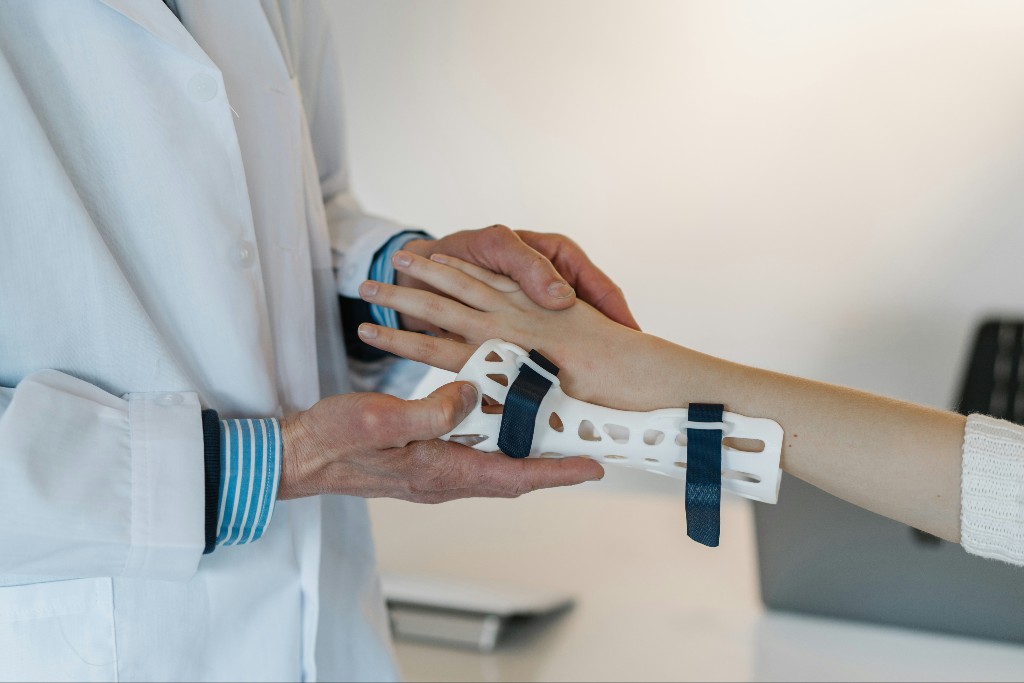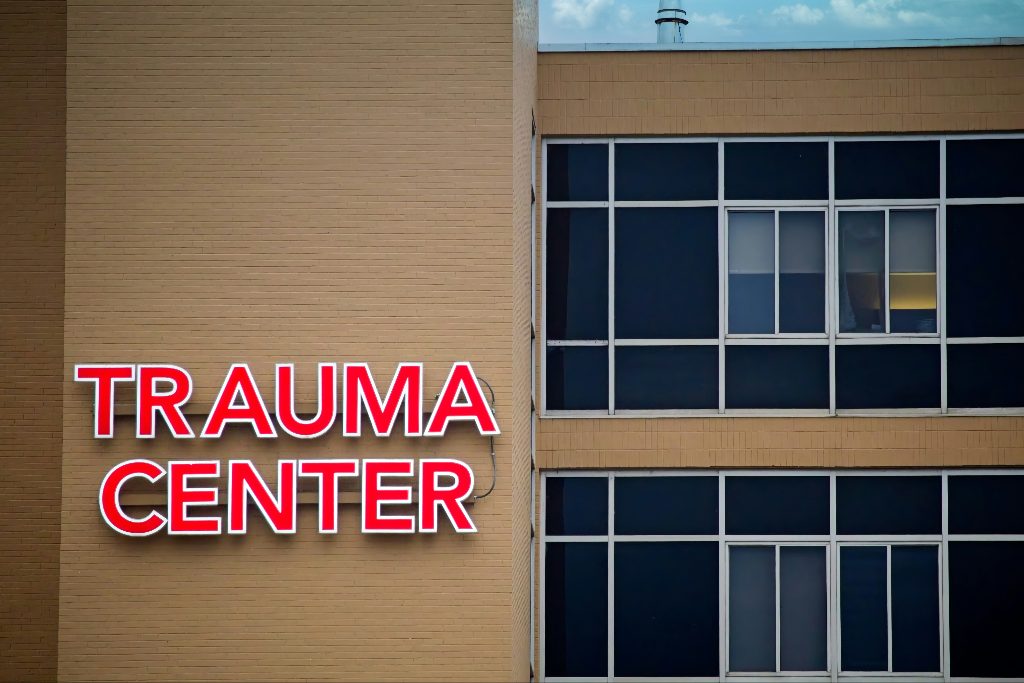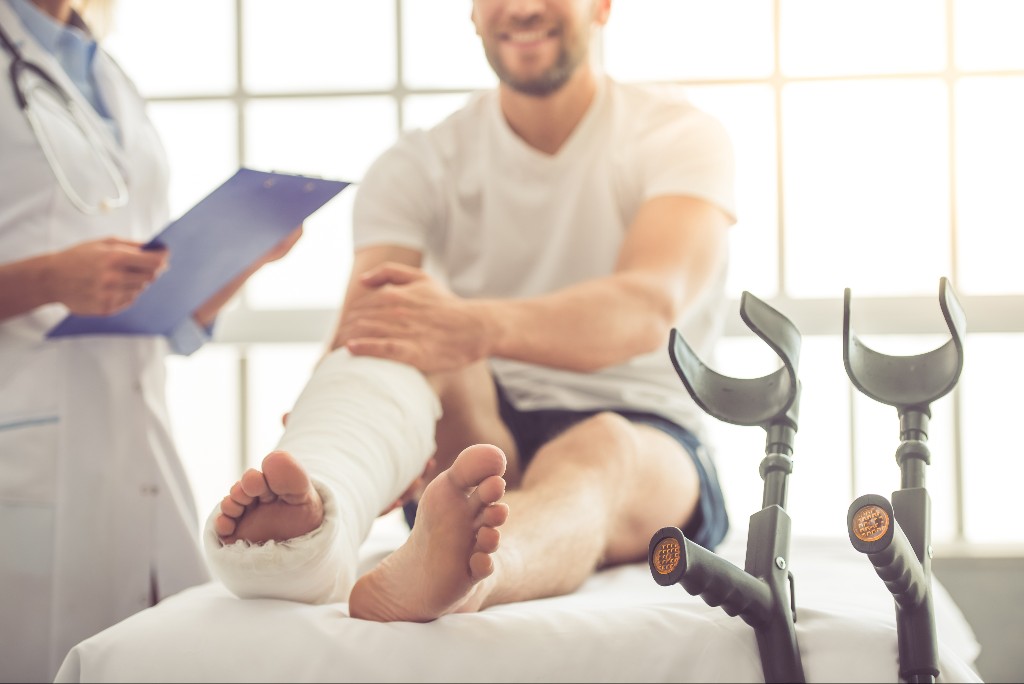You may have been told to “sit up straight” or “stop slouching” by your parents or a teacher at some point in your life. Standing and sitting with poor posture is often frowned upon because of how it looks, but it can also affect your healthy functioning as well. In fact, utilizing proper posture throughout your day helps your body in all sorts of ways. Proper posture helps you maintain your balance and provide support for your whole upper body. When you walk, run, stand, or sleep with poor posture, back pain can start to occur. If you struggle with bad habits like poor posture, back pain specialists near you are here to help. Continue reading to learn more about how bad posture and back pain symptoms can start to negatively impact your daily life and what you can do about it.
Common Examples of Poor Posture
Poor posture can occur whether you are sitting, standing, walking, exercising, lifting, or sleeping. There are two main ways of holding your body: dynamic posture and static posture. Dynamic posture refers to how you hold your body while you are moving around, while static posture is how you hold yourself when you are still. Holding yourself improperly with both dynamic posture and static posture can negatively impact your whole body. Here are common examples of poor posture when you are moving around and while sitting still:
Sitting on Unsupportive Furniture
One of the easiest ways to forget about using proper posture is when you are sitting on unsupportive furniture. While a living room sofa or office chair might seem comfortable when you sit down, you might start to develop back pain after sitting in overly plush or too firm pieces of furniture with non-ergonomic positions. Many types of furniture pieces do not properly support the spine and can actually encourage you to sit with your shoulders rounded, your abdominal muscles disengaged, and your back muscles stretched and strained in odd positions.
Hunching Forward While Sitting
When you sit for long periods of time and without proper support, you may find yourself hunching forward while sitting. Hunching or rolling your shoulders forward is an unfortunately common posture in the workplace or while working from your home office. If you work at a desk or at a computer for long hours, you might be hunching forward and leaning toward the computer screen or desktop in a way that puts pressure on your upper back. This type of hunched forward posture can also impact your head, neck, and shoulders too.
Slouching While Standing
Whether you stand for long periods of time on the job or you are not aware of how you hold your body while you are standing, you might slouch out of habit. The spine has a natural curve to it, but slouching can overexaggerate a healthy spinal curve and cause problems. When your back and abdominal muscles are weak or tired, your natural reaction may be to relax and slouch forward. However, this type of posture can actually aggravate these muscles further and put unnecessary pressure and stress on other parts of the spine.
Lying on Your Stomach
Stomach sleepers, beware! Lying on your stomach without proper support can actually negatively impact your posture and end up causing you pain. If you frequently sleep on your stomach or lounge around while lying on your stomach to read a book or work on your computer, then you might be stressing and straining back muscles and your spine. Most people carry most of their body weight in the middle of the body, so lying on your stomach can make it difficult to maintain proper posture and a neutral spine. When you lie on your stomach for long periods of time, it can shift your spine out of healthy alignment and increase your risk of experiencing spine pain.
Improperly Lifting Heavy Objects
Lifting heavy objects while bending from your back and waist can put significant strain on your back and spine. When you reach down to lift something from the floor, your back muscles and core muscles must also work together to help you lift the object up. If you bend from the waist, when you straighten with the heavy load in your arms, it puts a substantial amount of pressure and strain on your back muscles and spine. Improperly lifting heavy objects can lead to muscle strains and other back injuries.
Living a Sedentary Lifestyle
A lack of physical activity in your life can also make you more susceptible to bad posture and back pain. If you live a sedentary lifestyle, the muscles, tendons, ligaments, and other soft tissues that support your spine can become weakened with disuse. Weak muscles can make you more susceptible to injury and chronic pain. If you sit or recline for long periods of time throughout your day, especially while engaging in poor posture, then you may experience more stiffness and soreness.
How Poor Posture Can Cause Back Pain
When you spend a lot of time using improper posture, it can cause a ripple effect throughout your musculoskeletal system. Here are examples of how poor posture and back pain symptoms are intertwined.
Pressure on the Spine
Did you know that your spine actually supports more pressure when you are sitting or leaning forward than when you are simply standing up straight? When you lean forward, whether sitting or standing, your spine is under more pressure, which means the muscles, ligaments, and tendons that support your spine also experience more stress and strain.
Stressed Back Muscles
Your back muscles help provide strength and support for you to do all the big and small movements you rely on throughout your day. Whether you are moving from sitting to standing, twisting to look out the window, or bending over to pick something up, your back muscles are engaged. Your back muscles are designed to function at their best with a neutral spine and proper posture. Too much slouching, hunching, or lifting can stress and strain your back muscles.
Strained Abdominal Muscles
Your abdominal muscles engage along with your back muscles to help you bend, twist, and move throughout your day. A weak core is unable to effectively support your torso, which can lead to stressed and strained abdominal muscles. When you engage your core, it helps you to sit up straight and provide a healthy balance for holding yourself up properly.
Stiffness in Lower Back
Weakened and stressed muscles can become stiff and sore over time. Stiffness in your lower back is very common with poor posture because of how it takes a toll on your whole body. When you sit for long periods of time, especially with poor posture, it can put excessive strain on your lower back. You might experience stiffness when you first try to move after sitting in one position for a long period of time because the muscles in your lower back have been working overtime to support you.
How Poor Posture Can Exacerbate Back Injuries
Poor posture can also exacerbate back injuries, making back pain and other symptoms last longer than necessary while you heal and recover. Here are three examples of common back injuries and how poor posture can make your symptoms worse and even prolong your healing process:
Herniated Disc
A herniated disc refers to an issue with one of the spinal discs that separates two vertebrae. Spinal discs are located throughout the spinal column and help to provide shock absorption and support in between vertebrae. Each disc is made up of a tough outer shell with a soft, jelly-like center. A herniated disc can occur with age-related wear and tear on the body or from a sudden injury to the spine. When a herniated disc occurs, the outer shell cracks and the inner nucleus slips out and puts pressure on nearby structures in the spine. Poor posture can put significant strain on the spinal discs that help support vertebrae, which can increase herniated disc symptoms and further damage the disc.
Pinched Nerve
One of the most common examples of a pinched nerve is when you are sitting for too long and your foot “falls asleep.” This sensation of tingling and numbness occurs when a nerve is pinched or compressed, negatively impacting its ability to properly send signals to part of the body. In the case of your foot falling asleep, it typically wears off once you shift your stance or move around a bit, taking pressure off of the affected nerve. A pinched nerve in the spine can send pain, tingling, and numb sensations through to other parts of the body. When you sit or stand with poor posture, it can increase pressure on the aggravated nerve, making your pinched nerve symptoms last longer or worsen over time.
What Good Posture Looks and Feels Like
When many people hear “good posture,” they think of sitting up straight with their shoulders back. While straightening the spine and rolling the shoulders back is part of the equation, there are other elements involved that define good posture. Starting with your head, you want to hold your head in line with your shoulders and your chin parallel to the ground. When you work at a computer or desk, try to set your monitor at eye level so you can avoid turning your chin down and tilting your head forward. Roll your shoulders up and back, pressing them gently away from your ears. Your shoulders should also be even with one another. Whether you are sitting or standing, you want your back to mimic the neutral spine, meaning your upper body isn’t slouched forward or your lower back and buttocks aren’t overarched. When you are practicing good posture, both your back muscles and abdominal muscles are engaged and help to support a neutral spine.
5 Tips to Improve Posture and Back Pain
Here are 5 tips for how to improve your posture and decrease your back pain
1. Pay Attention to Your Posture
Awareness is the first step to improving your posture! Improving postural awareness means reminding yourself throughout the day to lift your chin, roll your shoulders back, and engage your core. When you make an effort to pay attention to your posture, you start developing a healthy habit of engaging in good posture throughout your day.
2. Utilize Ergonomic Support
Whether you work with materials you have at home or invest in specially designed products, utilizing ergonomic support throughout your day can also help you improve your posture. Ergonomic chairs are designed to help you sit upright, promote posture correction, and prevent you from slouching easily. You can also roll up a towel or use a small pillow behind your back to help provide more support for your spine if you sit for long periods of time each day.
3. Make Time for Movement
If your job requires you to sit at a desk each day, then it can be easy to fall into bad habits like poor posture. The good news is that taking small breaks throughout your day can help you break those habits. You don’t have to plan a workout or schedule a yoga class during the day to experience lasting relief from back pain caused by poor posture. Make time for small moments of movement throughout each day. Standing up, gently stretching your muscles, and taking a brief walk to the break room or around the office can get your blood flowing and help you reengage those back and core muscles.
4. Lift Heavy Objects Properly
Whether or not your job requires you to lift heavy objects often or you are an avid weightlifter, you should learn the basics of how to lift properly. When you bend to pick up an object from the floor, you want to keep your spine in a neutral position and bend from the knees. Bending from the knees helps to better redistribute the weight and pressure so that your back isn’t overloaded. This also helps you to avoid straining or pulling a muscle.
5. Improve Muscle Strength and Stability
Another way to improve your posture and reduce your back pain symptoms is by working on your muscles. Learn stretches and exercises that help you strengthen your muscles so they can provide better support to your back. Strong muscles help provide stability so that you can maintain good posture for longer periods of time.
Better posture = better health. If you are struggling with back pain and suspect that poor posture might be the culprit, then visit our back pain specialists at AICA Orthopedics in Atlanta. Our team of multi-specialty doctors can help identify misalignments in your spine, help you practice better posture, and even walk you through stretches and exercises to promote better health. Visit an AICA Orthopedics location near you to learn more about our team of doctors and how we can help you experience lasting relief from back pain.
Sources
Cramer, H., Mehling, W. E., Saha, F. J., Dobos, G., & Lauche, R. (2018). Postural awareness and its relation to pain: validation of an innovative instrument measuring awareness of body posture in patients with chronic pain. BMC musculoskeletal disorders, 19(1), 109. https://www.ncbi.nlm.nih.gov/pmc/articles/PMC5889545/
Kim, D., Cho, M., Park, Y., & Yang, Y. (2015). Effect of an exercise program for posture correction on musculoskeletal pain. Journal of physical therapy science, 27(6), 1791–1794. https://www.ncbi.nlm.nih.gov/pmc/articles/PMC4499985/
Nowotny J, Nowotny-Czupryna O, Brzęk A, Kowalczyk A, Czupryna K. Body posture and syndromes of back pain. Ortop Traumatol Rehabil. 2011 Jan-Feb;13(1):59-71. English, Polish.
https://pubmed.ncbi.nlm.nih.gov/21393649/





